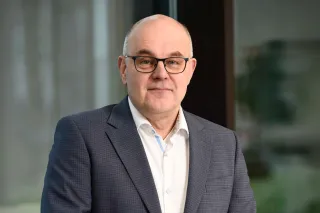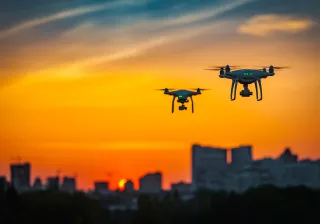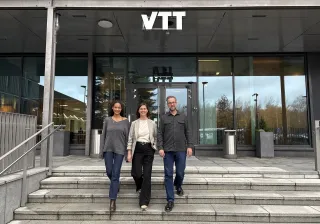VTT has launched a satellite communications research project to develop new solutions for critical communications. The project aims to facilitate communication between authorities in challenging conditions, such as during major forest fires, but satellite connections are also beneficial in maritime operations and remote mining areas.
Good connections are crucial for the seamless flow of information between authorities. Data and situational information must circulate between border guards, police, and fire services, for example, at all times. However, there are many areas where the network does not function properly or where there is no coverage at all, and separate satellite phones or other satellite communication devices are needed.
VTT aims to address this challenge with the project "6G-enabled Satellite-based Machine Type Connectivity for Demanding Applications in Remote Regions" (6G-SatMTC) which was launched in April 2023 and has now progressed to the next phase. The research organisations involved are VTT and the University of Oulu, along with companies Nokia, Airbus, Keysight, ABB, Fairspectrum, Suomen Erillisverkot, Magister, Verkotan, and Weir Minerals.
"The concept involves integrating terrestrial and satellite networks seamlessly together. In the envisioned scenario, an end-user device, like a sensor or a mobile phone, would primarily connect to a nearby base station when available. However, if the base station connection is not available, the device would automatically switch to a satellite connection. This ensures that the network connectivity remains consistent and uninterrupted under all circumstances," says the project coordinator Marko Höyhtyä, Research Professor at VTT.
The specific objective of the project is to support operations during major forest fires, so that firefighting personnel have real-time situational awareness and reliable communication capabilities. This simultaneously improves the safety of first responders.
The project will also address the communication challenges in maritime and remote mining areas.
"In maritime operations, satellites are always necessary, as terrestrial networks do not reach far enough at sea. However, the capacity of older equipment is insufficient to meet the demands of digitalisation. New technology could enable smoother logistics and better services for seafarers," Höyhtyä continues.
The solution could also benefit health care, agriculture, and road logistics in areas where terrestrial networks perform poorly.
"If in the future satellite connectivity can be established directly via mobile phones, people would not need to purchase separate devices, and connections would work even while hiking in the wilderness. That would be a real game-changer," says Höyhtyä.
Satellite connectivity holds tremendous business potential
VTT has already interviewed end-users for the project – public authorities, mining and maritime companies – and identified their needs, which will be taken into account in planning. At this stage, the test platform has already been defined, simulation environments partially developed, and a global satellite system modelled.
“Keysight supports this project through the provision of advanced channel emulation capabilities, allowing real-world conditions of the current 5G and future 6G standards to be modelled, developed, and evaluated. Combined with strong competence in network emulation, covering all new cellular technologies including 5G-Advanced and Non-Terrestrial Networks, Keysight continues to lead in the development of satellite communications test solutions. Collaboration with 6G-SatMTC project advances the development of new technologies, standards, and use cases, and enables testing satellite networks with simulated service before launch of operational networks”, says Janne Kolu, director of the Keysight’s Channel Emulation Center of Excellence in Oulu-Finland.
Preliminary simulation results are already available, and the first scientific publications have been accepted. As more results accumulate, they will be tested on increasingly complex systems.
"The connections between end devices and satellites carry a huge business potential for space data communication and space communication, as the number of users is expected to grow by millions in the coming years. In time, new solutions could also bring down the cost of existing services," says Höyhtyä.
"At Nokia, we see that this project creates new possibilities for communication both between devices and people. The developed technology will address the real-time communication needs of remote mining operations as well as other secure and reliable communication requirements, utilizing energy-efficient, next-generation solutions. The integration of satellite communications into both 5G and future 6G systems will complement terrestrial networks and enable the availability of mobile technology even in remote areas," says Ilkka Känsälä, Department Head at Nokia.
The project is funded through Business Finland's 6G Bridge programme, which promotes socially significant 5G Advanced and 6G technologies in Finland. The programme focuses particularly on technologies that can bring new business opportunities to Finland.
One of the project's objectives is compatibility with the European IRIS2 network and other international systems. The project will also support the strategic partnership between VTT and the European Space Agency in the development of 5G and post-5G technologies. The funding for the project extends until the end of October 2025.




